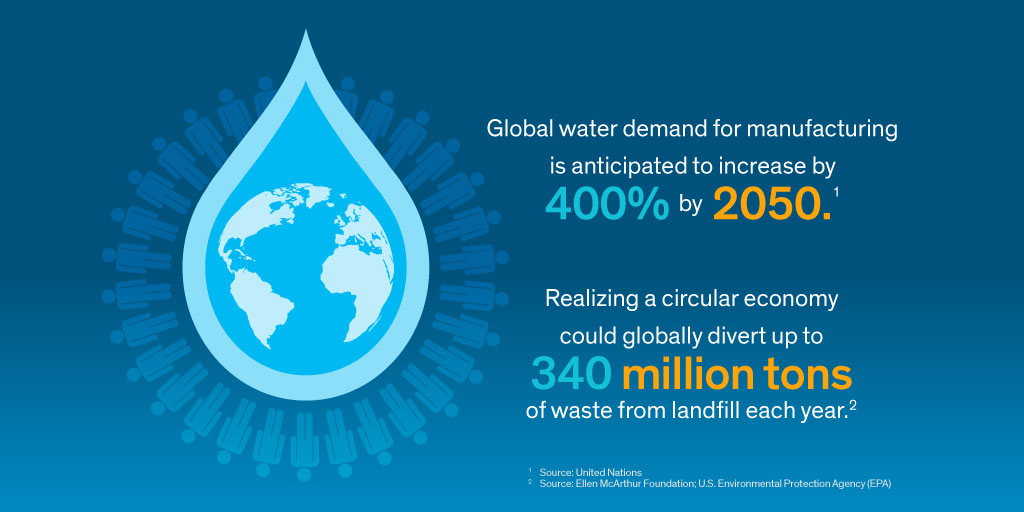Code Green Solutions


Today, on #EarthDay2016, as world leaders gather in New York to sign the Paris Accord into force, we will be convening another #CleanEnergyU dialogue to ask what the Paris COP1 agreement commits us to deliver in practice – as companies, cities, campuses, students – and how we best achieve a future “well below 2 degrees” temperature rise?
It took remarkable collaboration between nations to deliver the Paris Accord. In his State of the Union address, President Obama inspired us to “together, make change happen” in order to address climate change. And so, today in our #CleanEnergyU dialogue, we ask:
Snehal Desai directs Dow’s water business, whose solutions simultaneously deliver a cleaner water and energy future. Collaboration, in his eyes, is an essential ingredient to our success. Wondering why? Wondering how the White House views these same questions?
Read Snehal’s article [below]… And join him, alongside White House leaders Dan Utech and Rohan Patel, business, student and clean energy leaders in conversation on Twitter at #CleanEnergyU today, 12-4pm ET, to share your voice and insights so that, together, we can deliver a future “well below 2 degrees”!
Collaboration, a necessary ingredient in progress toward sustainability
By Snehal Desai, Global Business Director, Dow Water & Process Solutions
An African proverb says, if you want to go fast, go alone, but if you want to go far, go together. This Earth Day, I’m excited to talk about a key ingredient that can help us all get closer to reaching the goal of a more sustainable future: collaboration.
I lead a global workforce of over 1,700 in Dow Water & Process Solutions, a business unit of The Dow Chemical Company, of which more than 650 people are based in our advanced manufacturing and research facilities in Edina, Minnesota. All of us take pride in the fact that we provide technology to clean water for home and industrial use, and make industrial processes more energy and water efficient. But without collaboration with our partners across the value chain, including government and non-profits, we would just have a lot of fancy technology and expertise with no way to bring innovation to the [water] source. No pun intended!
Right now, we need innovation more than ever. Most people understand that water is a limited resource and conservation can only go so far. What’s less understood is that water and energy are inextricably linked – it takes energy to treat, extract and transport water, and water is used directly in most forms of power generation. Therefore, water management is essential for any attempt to achieve a low-carbon economy.
We need to commit to a new approach that focuses on a circular economy model where demand for water is reduced and wastewater is continuously recycled and reused, as opposed to the old model of “take, make and dispose.” In fact, earlier this year, the U.S. Water Alliance awarded Dow with the U.S. Water Prize <http://uswateralliance.org/one-water/us-water-prize> for our Minimum Liquid Discharge concept — a more cost-effective, and sustainable way for companies to improve their water footprint, enabling recovery of up to 95 percent of liquid discharges but at a fraction of the costs of solutions aiming for Zero Liquid Discharge. Dow was recognized for our leadership in developing new water management strategies, offering innovative products and technologies to support these strategies, and most importantly to the theme of this post, for entering into effective collaboration models that make these solutions more attainable.
From a water perspective, advancing a circular economy leads us to treating water for reuse. This process has become much more cost-effective and less energy intensive in recent years thanks to advances in technology. As a result, barriers to adoption, like cost and energy concerns, are slowly coming down. For example, reverse osmosis, or RO, is a membrane technology that excels at removing contaminants from most challenging water sources, and even salt from seawater. Historically, the use of RO had been cost prohibitive due to the vast amount of energy needed to power the process.
Over the past 30 years, research scientists and others in the water industry have been able to reduce the cost of recovering fresh water from seawater from $10 per 1,000 gallons to below $1 per 1,000 gallons using RO, and also to reduce the energy needed to desalinate seawater by more than four times. This is a win not only for our pocketbook, but for the environment – helping reduce our carbon footprint.
Making this technology accessible to more people is a collaborative effort. The Carlsbad Desalination Project in San Diego County is one example of a public-private partnership we’re proud to have been a part of. The collaboration has not only established a locally-controlled, drought-proof supply of drinking water for nearly 112,000 households, but compared to the technology available 10 years ago, the plant requires 12 percent less energy to yield the same quantity and quality of water.
![Carlsbad RO Construction_Credit Posiedon Water[1]](http://insight.gbig.org/wp-content/uploads/2016/04/Carlsbad-RO-Construction_Credit-Posiedon-Water1.jpg) During the three-year construction, the project has also supported thousands of local jobs and generated $350 million into the local economy. It saved this water-stressed region from the costly expense of having to import water. These kinds of milestones show that having the right technology is just one part of the equation – we need buy-in and support from multiple stakeholders and to evolve our mindsets and infrastructure models to find ways to implement holistic solutions.
During the three-year construction, the project has also supported thousands of local jobs and generated $350 million into the local economy. It saved this water-stressed region from the costly expense of having to import water. These kinds of milestones show that having the right technology is just one part of the equation – we need buy-in and support from multiple stakeholders and to evolve our mindsets and infrastructure models to find ways to implement holistic solutions.
In the near term, I expect to see more collaborations, more private and public partnerships and more creative solutions as organizations realize that investing in water reuse and infrastructure is not just the right thing to do, but the smart thing. And, arguably, the necessary thing.
Advancing the adoption of water reuse tactics and a circular economy model are not just something that those in government and business can do. Raising awareness and educating people about the importance of these strategies are also necessary. For example, in California, a recent survey <http://www.businesswire.com/news/home/20160314005714/en/> found that 89 percent of residents are more willing to use recycled water after learning about the advanced treatment processes used to make it clean and safe (Source: Xylem). As people become increasingly educated about the effectiveness of advanced water treatment, the majority support recycled water as a long-term solution to water shortage.
We need more people who can be a voice for change and who can communicate solutions in an honest and rational way.
For young people today who are considering careers related to sustainability, I can personally attest that a career in the water sector is rewarding and much needed. In fact, the Environmental Protection Agency estimates that water infrastructure needs $384 billion in investments over the next 20 years. Now, that’s a lot of opportunity.
Earth Day provides us with a platform to elevate the conversation around the world’s water needs. Now, we must push forward and form partnerships across industries and positions to prioritize the long-term and sustainable use of our precious water resource.
When it comes to the future of our planet, let’s not just look ahead, but also look around. There are many people around the world who share our same goals and we all must work together to make them happen. So, while the destination is crystal clear, it will take all of us to determine the best mode of transportation. I’d be up for a carpool, would you?